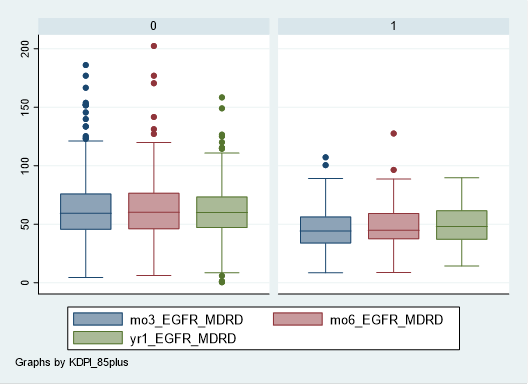Outcomes of High KDPI Kidneys in Selected Recipients at a Large Center
Miami Transplant Institute, Miami, FL
Meeting: 2020 American Transplant Congress
Abstract number: A-052
Keywords: Donors, marginal, Graft function, High-risk, Kidney transplantation
Session Information
Session Name: Poster Session A: Kidney Deceased Donor Selection
Session Type: Poster Session
Date: Saturday, May 30, 2020
Session Time: 3:15pm-4:00pm
 Presentation Time: 3:30pm-4:00pm
Presentation Time: 3:30pm-4:00pm
Location: Virtual
*Purpose: Kidneys from donors with high KDPI’s are frequently discarded due to concerns about short- and long-term outcomes. Despite the decreased graft survival of these kidneys, the patient survival benefit of receiving a transplant and avoiding additional waiting time on dialysis is significantly beneficial, especially in those with poorer prognosis on dialysis.
*Methods: We increased the utilization of high KDPI (KDPI>85%) deceased donor kidneys over several years in patients selected and consented for such organs. We performed a single-center retrospective review of 694 consecutive deceased donor kidney transplants between October 2016 and March 2019. Our primary endpoints were Kaplan-Meier death-censored graft survival and eGFR by MDRD equation at 3, 6, and 12 months post-transplant. Mean eGFR values were compared for significance between the groups using a t-test. Patient survival is not reported as the selection bias in kidney recipients deliberated targeted patients likely to have poorer post-transplant survival regardless of donor kidney.
*Results: 694 patients were transplanted: 137 (19.7%) received a donor with KDPI > 85% and 557 (80.3%) received kidney with a KDPI of <85%. As expected, the high KDPI group had a higher mean age (66.7 [SD: 6.45] vs. 53.6 [SD: 12.74] than the <85% group (p = 0.000) and a higher mean EPTS (76.4 [SD: 19.2] vs. 51.0 [SD:29.4] (p=0.000), reflecting deliberate recipient selection.Death-censored graft survival at 1yr was 93.0% in the group who received donors with KDPI > 85% vs 97.2% in the group with KDPI <85%. Neither the hazard ratio for KDPI > 85% as a binary variable nor KDPI as a continuous variable were statistically significant by the Cox Proportional Hazards Model.1-yr mean eGFR by MDRD equation was 48.7 ml/min/1.73m2 in the KDPI > 85% group vs 60.8 ml/min/1.73m2 in the < 85% KDPI group, a statistically significant difference (p=0.000). Box-and-whiskers plots of 3, 6, and 12-year eGFR are shown (figure 1). Differences at each timepoint in mean eGFR between the groups was significant at p<0.05.
*Conclusions: Death-censored graft survival of high KDPI kidneys in our recipients, while lower, was not significantly different from recipients of low KDPI kidneys. eGFR was consistently lower during the one-year follow-up period in the increased KDPI group, but nonetheless provided good function to those recipients, especially in light of the alternative of remaining on dialysis. We believe utilizing these high KDPI kidneys in selected recipients is an important aspect of reducing waiting time and the morbidity and mortality of dialysis.
To cite this abstract in AMA style:
Pagan J, Preczewski L, Muldoon M, Mendez L, Harshman A, Shipman E, Guerra G. Outcomes of High KDPI Kidneys in Selected Recipients at a Large Center [abstract]. Am J Transplant. 2020; 20 (suppl 3). https://atcmeetingabstracts.com/abstract/outcomes-of-high-kdpi-kidneys-in-selected-recipients-at-a-large-center/. Accessed January 5, 2026.« Back to 2020 American Transplant Congress

